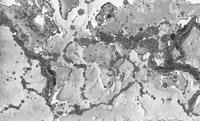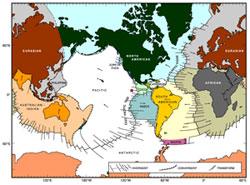In the future not many diamonds will be generated
2002/09/10 Galarraga Aiestaran, Ana - Elhuyar Zientzia
Geologists of the Carnegie Institute of Washington (USA) After analyzing the formation of diamonds, they have drawn up a map of the situation of diamonds. For the realization of this map data have been collected from earthquakes in South East Africa for 20 years, territory very famous for its greater presence of diamonds.

Earthquakes generate two types of waves: P-waves that propagate in depth and S-waves that propagate in open. Measuring the velocity of P waves through the earth's surface and mantle, geologists have discovered the composition of the rocks where diamonds are formed. In addition, the impurities of diamonds have been analyzed to know the age of the rocks and their formation. It seems that, with the exception of a few, almost all diamonds are earlier than a billion years ago.
Tears of the gods or prisons of the stars
For the Greeks, diamonds were tears of the feasts. The Romans, for their part, considered themselves astillas of shooting stars. Today it is known that diamonds are produced at a pressure of 50,000 atmospheres and at a depth of 200 km. Due to the strong compaction of carbon in these conditions, the structure changes and the carbon atoms are organized forming a crystalline network. Once formed, diamonds are expelled by the magma of volcanoes. However, some aspects of the constitution process remain unclarified.
In view of the time of the appearance of diamonds, geologists have separated them in three generations. The first generation emerged 3.3 billion years ago. They are witnesses of the first geological era of the Earth and are the oldest rocks known. Geologists are able to know the underground place of South Africa.
The second generation emerged later, about 2.9 billion years ago. They are more widespread than the previous ones in the mantle of the Earth and formed in a different way. Studying the impurities of second-generation diamonds, researchers believe that they emerged from rocks located under a shallow sea. These rocks were somehow moved into the interior of the Earth and due to pressure and heat, carbon deposits of biological origin became diamonds.
Those of the third generation, the youngest, were born about 100 million years ago. They are the smallest and most unknown. They still do not know how they were formed, but geologists believe they will no longer be created much more. According to them, at the time of the formation of diamonds there were other conditions. Perhaps the interior of the Earth was warmer or the composition of the rocks was somewhat different. However, something has changed since then, and diamonds are related to the geological youth of the Earth.

Gai honi buruzko eduki gehiago
Elhuyarrek garatutako teknologia






